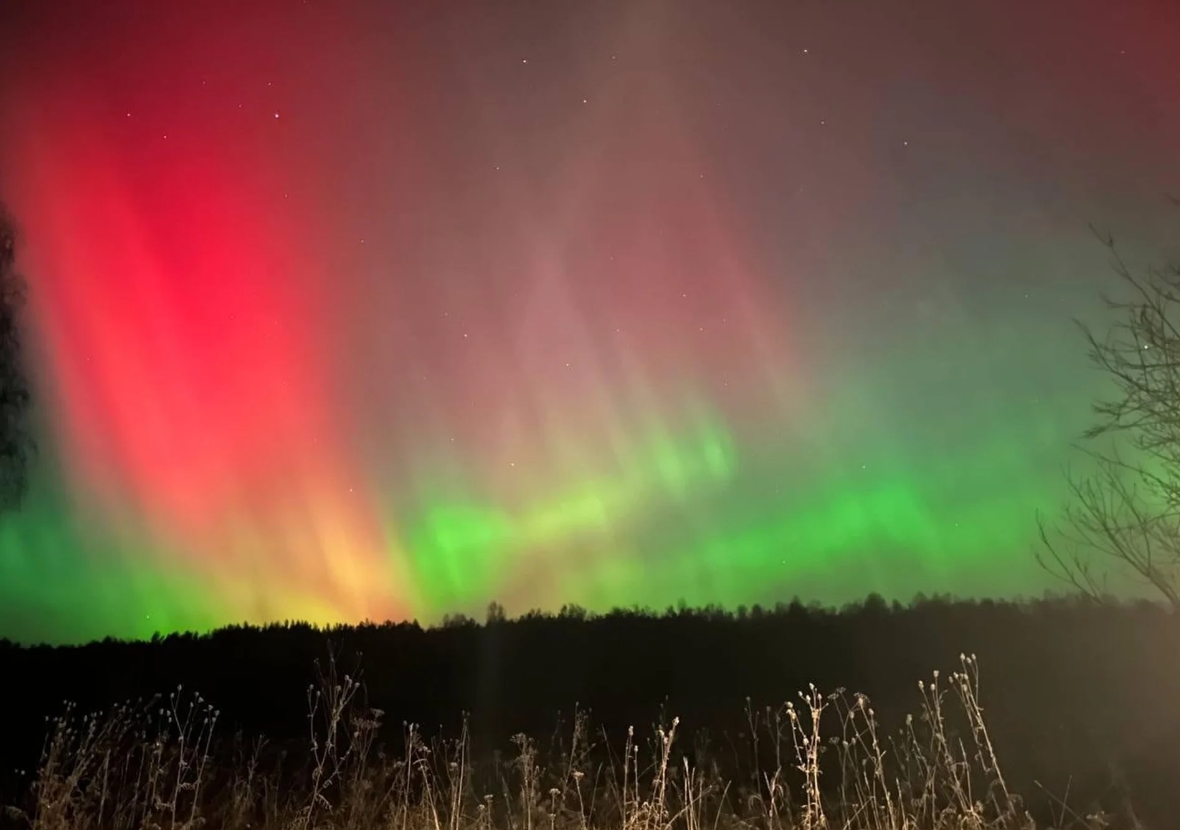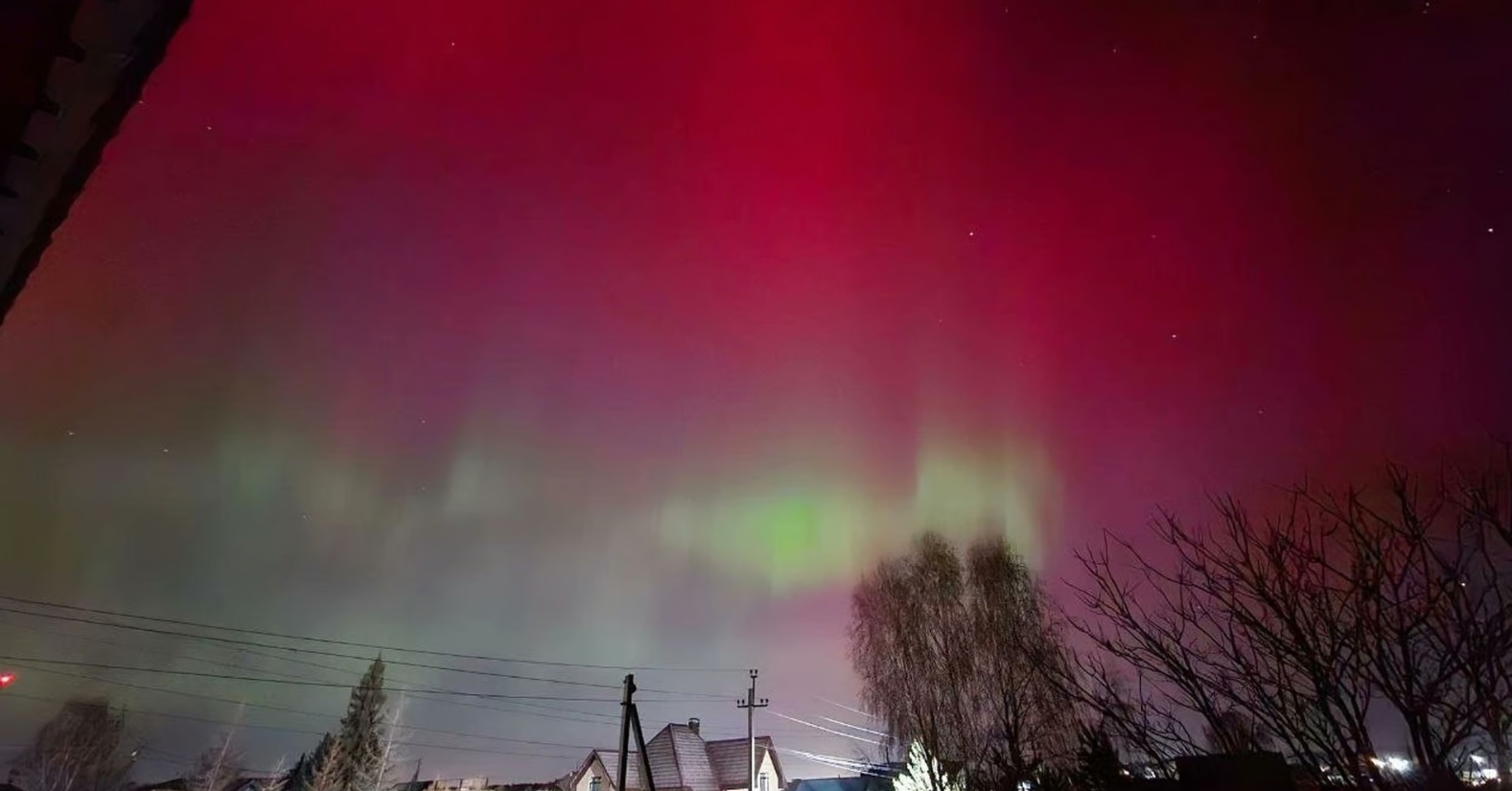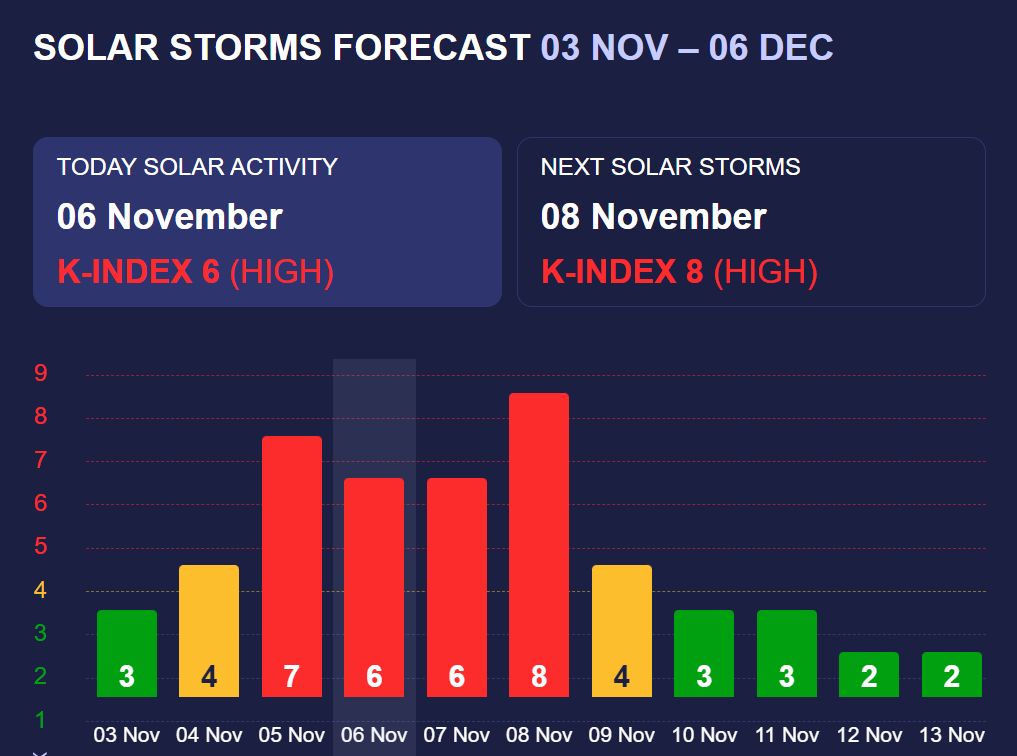More northern lights: Strong magnetic storms coming
 RBC-Ukraine collage
RBC-Ukraine collage
High-level magnetic storms are expected in the coming days. Yesterday, during the appearance of the Northern Lights over Ukraine, magnetic storms of K-index 7 were observed. This week, an incredibly powerful storm of K-index 8 is anticipated, according to Meteoagent.
What is a magnetic storm
Numerous explosions and flares occurring on the Sun trigger the release of solar energy. This energy scatters in various directions, including towards Earth. This energy consists of charged particles - protons and electrons, which can move quickly through space.
When this energy reaches Earth's magnetosphere, it provokes activity known as solar or magnetic storms. Scientists distinguish various levels of power and classifications, from moderate storms to geomagnetic storms.
All storms up to K-index 4 are considered moderate and low-power, while storms of K-index 5 and higher are classified as red-level storms and are strong. The higher the index, the more significant the potential consequences.
They can cause disruptions in satellite operations, mobile communication, electronics, and GPRS. During K-index 7 and 8 storms, people may witness the unique phenomenon of the Northern Lights.
What is known about the upcoming magnetic storms
On Sunday, November 5, Earth experienced a K-index 7 storm, which caused the Northern Lights to appear. Ukrainians in the Left-Bank region had the opportunity to witness this unique event, and photos flooded the internet.



Northern Lights on November 5 (photo: Meteoagent)
On Monday, November 6, and Tuesday, November 7, according to data from satellite systems NOAA, TESIS, and international meteorological laboratories worldwide, a K-index 6 storm will occurr. This is a relatively powerful red-level magnetic storm.
On Wednesday, November 8, Northern Lights may reappear, as experts predict a powerful geostorm with a K-index of 8. The magnetosphere is expected to return to a calm state only in the second half of the week, starting from November 9.

Impact of magnetic storms on humans
Scientists have been studying the ability of magnetic storms to affect human well-being for many years, and there is a considerable body of research confirming this correlation. People often complain of headaches, dizziness, migraines, excessive daytime sleepiness, insomnia at night, general weakness, quick fatigue, a decline in overall well-being, reduced concentration, increased anxiety, depression, irritability, and aggression on such days. Most significant danger is posed by powerful magnetic storms for astronauts who are beyond the protective shield of Earth's atmosphere. They risk exposure to high levels of radiation, significantly increasing the risk of developing cancer.
How to mitigate the impact of a magnetic storm
Doctors typically provide general recommendations:
- Get enough sleep and stick to a regular sleep schedule (at least 7-9 hours per day).
- Maintain a balance between work and rest - do not overstrain or exhaust yourself.
- Ensure you walk outdoors daily as it oxygenates the brain. Additionally, it's advisable to ventilate indoor spaces more frequently.
- Reduce psychoemotional stress and avoid stressful situations.
- Eat a balanced diet, consume an adequate amount of water, quit smoking, alcohol, and unhealthy food when necessary.
- If needed, consult a doctor for advice.

